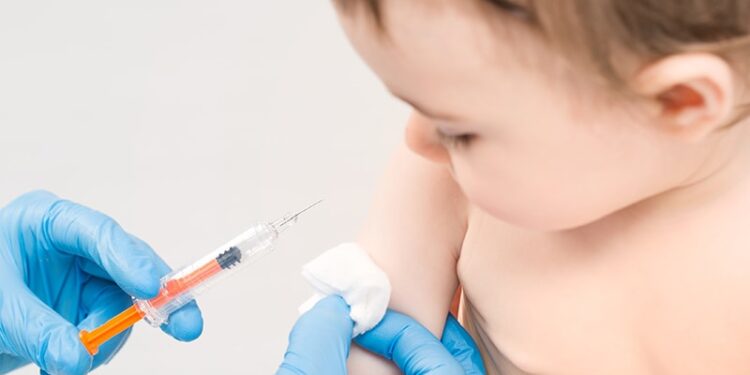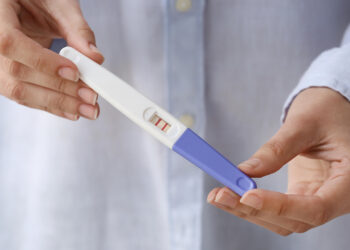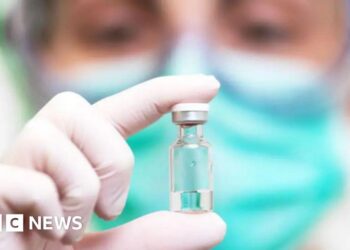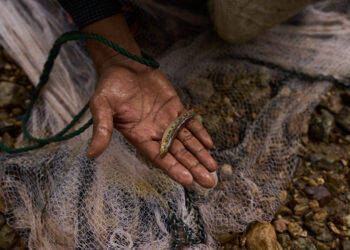TOPLINE:
Only about one third of eligible children born outside the typical respiratory syncytial virus (RSV) season received nirsevimab, a monoclonal antibody for RSV prophylaxis. Older age, Black race, and public insurance were associated with reduced rates of receipt.
METHODOLOGY:
- Researchers conducted a retrospective study to examine how many children born outside the typical RSV season (October to March) received nirsevimab and which factors influenced its receipt, such as age, race, insurance type, and residing in low- vs high-opportunity areas (measured by an index indicating neighborhood features that support child development).
- They included children younger than 8 months who received care across 32 pediatric primary care practices in Pennsylvania and New Jersey, all of which had nirsevimab available.
- A total of 7208 eligible children born between April and September 2023 (average age at the start of RSV season, 3.5 months; 49% girls; 51.3% White) were included. All had at least one visit to primary care within 14 days of birth and at least one visit after reaching 8 months of age or after the RSV season ended.
TAKEAWAY:
- Overall, 35% of eligible children received nirsevimab, and uptake varied by practice from 20% to 65%. Of those who received nirsevimab, 53.1% were White and 64.4% had private insurance.
- Older age was associated with reduced odds of receiving nirsevimab (adjusted odds ratio [aOR], 0.60; 95% CI, 0.58-0.62 for each additional month). Children with low weight at birth had higher odds of receiving nirsevimab (aOR, 1.43; 95% CI, 1.13-1.82).
- Children who were Black vs White (aOR, 0.53; 95% CI, 0.43-0.65), with public vs private insurance (aOR, 0.79; 95% CI, 0.67-0.92), and living in very low- vs very high-opportunity areas (aOR, 0.70; 95% CI, 0.54-0.91) had significantly lower odds of receiving nirsevimab.
- Among children fully vaccinated against diphtheria, Haemophilus influenzae type B, poliovirus, Streptococcus pneumoniae, tetanus, and pertussis, 38.7% received nirsevimab.
IN PRACTICE:
“The identification of sociodemographic factors associated with receipt of nirsevimab emphasizes the importance of examining the drivers of these disparities to inform interventions designed to ensure more equitable uptake so that all children are protected from RSV,” the authors of the study concluded.
SOURCE:
This study was led by Mahaa M. Ahmed, MS, of the Clinical Futures at Children’s Hospital of Philadelphia in Philadelphia. It was published online on July 17, 2025, in Pediatrics.
LIMITATIONS:
The data represented practices in only one care network, and the findings may not be generalizable. Infants entering their first RSV season were included, which prevented the evaluation of nirsevimab uptake among children at high risk entering their second season of RSV. This retrospective study used electronic health records and could not capture family preferences, knowledge of nirsevimab, or interactions between families and clinicians during vaccination opportunities.
DISCLOSURES:
This study received support from the Infectious Diseases Society of America’s Grants for Emerging Researchers/Clinicians Mentorship program and the Pediatric Infectious Diseases Society’s Supporting Research and Promoting Pediatric ID program. The authors reported having no conflicts of interest.
This article was created using several editorial tools, including AI, as part of the process. Human editors reviewed this content before publication.
Source link : https://www.medscape.com/viewarticle/social-factors-affect-access-respiratory-syncytial-virus-2025a1000jor?src=rss
Author :
Publish date : 2025-07-25 07:53:00
Copyright for syndicated content belongs to the linked Source.










